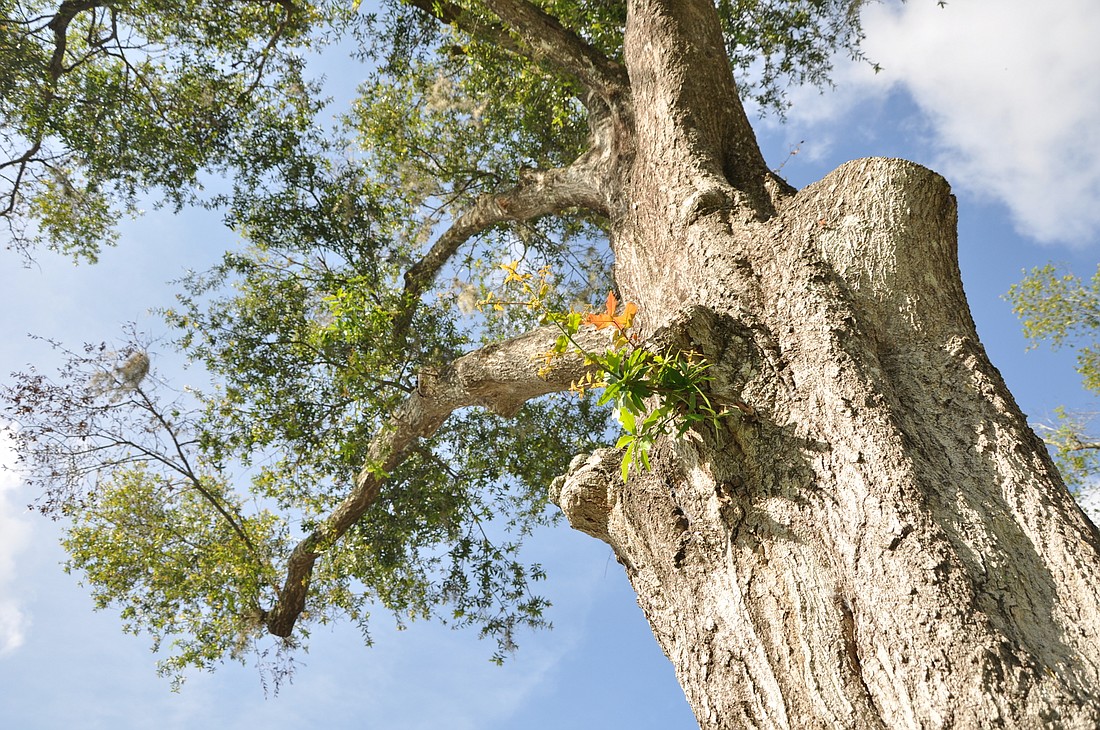- April 24, 2024
-
-
Loading

Loading

For the first time in 30 years, Winter Park resident Jim Curasi, 68, had to buy a sprinkler for his front lawn at his home on Oakhurst Avenue. There wasn’t any shade to protect the grass.
He also can see Lakemont Elementary School for the first time from his front window — visible in the distance just above the homes across the street.
The reason for the change in scenery is simple: The trees along Oakhurst Avenue are dying.
Oakhurst Avenue is just one Winter Park road feeling the effects of a tree canopy in decline — the result of Winter Park planting several oak trees throughout the city that only lived for 50 years.
Winter Park’s Urban Forestry Division has removed eight trees along Oakhurst in the past few years, Curasi said. It’s been part of an ongoing process to plant new oak trees that live much longer throughout the city to revitalize the tree canopy.
Winter Park Director of Communications Clarissa Howard said Hurricane Matthew and the recent drought created additional stress on the already-declining trees along Oakhurst Avenue.
But the trees may be dying off faster than the city can replant them, Curasi said. The last oak tree in his front yard is dying, as well, recently dropping a large limb in the middle of the street last month.
But Curasi said he understands the city is doing its best to keep up. He also credited how well the city has taken care of the new oak trees — someone comes out to water them around the clock, he said.
“The forestry department does a great job,” Curasi said. “They’re one of the better city departments that really has their act together. They’re very responsive to the trees; I just think they’re behind the eight ball. The trees are dying (more quickly) than they can plant new ones.”
Resident Scott Damman said the trees were what made him buy his home along Oakhurst Avenue 16 years ago in the first place. He’s seen three trees — two in his front yard and one in his backyard — die in the past couple years. The lack of shade made his air conditioning bill increase, as well.
“I had a really nice canopy when I moved in, and there’s zero canopy now,” Damman said.
Lakemont Avenue and Phelps Avenue to the east and west also have lost several trees, he said, and many trees throughout the city have been “butchered” to accommodate power lines, especially along the Cady Way Trail, Damman said.
“It’s so bad that I think it affects their longevity,” he said. “I’m sorry, but half a tree doesn’t impact a power line.”
Winter Park officials went on a crusade to restore its tree canopy last year when they approved a budget of $1.7 million for Urban Forestry Services. It was an increase of $80,000 from the previous year, with 38% more funding going toward new trees along public roads.
City Arborist Dru Dennison said last year, the city planned to plant more than 600 right of way trees during the 2017 fiscal year.
“We are now planting more trees than we are removing,” Dennison said in September 2016. “In fiscal year 2015, we planted 493 and removed 480. That trend has continued this year as we have already planted approximately 500 trees and have 100 reserved but are waiting for the extreme heat to let up before planting them.”
It’s difficult to see the trees go along Oakhurst, Curasi said. One tree in Curasi’s backyard — although out of the city’s purview — once provided a shady respite for Curasi in his college years. Today, it’s a twisted collection of barren branches — many have already fallen off.
It’s still alive but slowly dying.
Curasi hopes to see a canopy come back to his street someday.
“The (main) reason I love Winter Park is because of the trees,” he said. “It’s sad to look out my front window and just see Lakemont Elementary. I have no problem with Lakemont Elementary, but I’d like to see a tree there instead.”